I wrote a small piece of code for Outlook 2016 that takes emails from my Inbox and Sent Items folders and moves them to an archive folder, but even if I use the Application_Startup or Application_Quit methods, the script only works if I open the editor (Alt+F11) or if I run the script manually first (I use a button on the quick access toolbar for it). I can't figure out why only works with those preconditions, even if I don't do anything at all after opening the editor.
This is the code I used:
Private Sub Application_Startup()
'MsgBox "Hello"
Call archive
End Sub
Public Sub Application_Quit()
'MsgBox "Goodbye"
Call archive
End Sub
Option Explicit
Public Sub archive()
' this should run on app startup
Const MSG_AGE_IN_DAYS = 90
Dim myFilteredItems As Outlook.Items
Dim myItem As Object
Dim myDate As Date
Dim myNameSpace As Outlook.NameSpace
Dim myInbox As Outlook.Folder
Dim mySent As Outlook.Folder
Dim myDestFolder As Outlook.Folder
Set myNameSpace = Application.GetNamespace("MAPI")
Set myInbox = myNameSpace.GetDefaultFolder(olFolderInbox)
Set myDestFolder = myInbox.Parent
Set myDestFolder = myDestFolder.Folders("Archive")
Set mySent = myInbox.Parent
Set mySent = mySent.Folders("Sent Items")
myDate = DateAdd("d", -MSG_AGE_IN_DAYS, Now())
myDate = Format(myDate, "dd/mm/yyyy")
Debug.Print "checking " & myInbox.FolderPath
Debug.Print "for msgs older than " & myDate
' you can modify the filter to suit your needs
Set myFilteredItems = myInbox.Items.Restrict("[Received] <= '" & myDate & "' and [MessageClass] <> 'IPM.Note.SMIME'")
Debug.Print "moving from Inbox " & myFilteredItems.Count & " items"
If myFilteredItems.Count <> 0 Then
Set myItem = myFilteredItems.GetFirst
End If
While myFilteredItems.Count > 0
Debug.Print " " & myItem.UnRead & " " & myItem.Subject
myItem.Move myDestFolder
Set myFilteredItems = myInbox.Items.Restrict("[Received] <= '" & myDate & "' and [MessageClass] <> 'IPM.Note.SMIME'")
Set myItem = myFilteredItems.GetFirst
Wend
Set myFilteredItems = mySent.Items.Restrict("[Received] <= '" & myDate & "' and [MessageClass] <> 'IPM.Note.SMIME'")
Set myDestFolder = myInbox.Parent
Set myDestFolder = myDestFolder.Folders("Archive Sent Items")
Debug.Print "moving from Sent Items " & myFilteredItems.Count & " items"
If myFilteredItems.Count <> 0 Then
Set myItem = myFilteredItems.GetFirst
End If
While myFilteredItems.Count > 0
Debug.Print " " & myItem.UnRead & " " & myItem.Subject
myItem.Move myDestFolder
Set myFilteredItems = mySent.Items.Restrict("[Received] <= '" & myDate & "' and [MessageClass] <> 'IPM.Note.SMIME'")
Set myItem = myFilteredItems.GetFirst
Wend
Debug.Print ". end"
Set myInbox = Nothing
Set myFilteredItems = Nothing
Set myItem = Nothing
End Sub
The script works just fine, even if it is not the most elegant solution, but only if I open the editor or if I run the script manually. If I open the editor and then immediately after I close Outlook, the Application_Quit() method kicks in and works fine, but it does not do anything if the editor was not opened at some point during the session. I played a bit with "public" and "private" on the declaration of the methods, to see if it would change anything, but nothing worked.
Macro settings is set to "Notifications for digitally signed macros, all other macros disabled". I may not change this, because it is set this way through policy on my organization. The script is signed with a self-signing certificate. Before signing the script I was not able to run it at all.
I get no errors at all during any step of these processes.
Could anyone point out why it works the way it does and if I may do anything to modify this behaviour?


